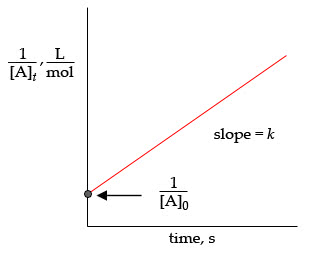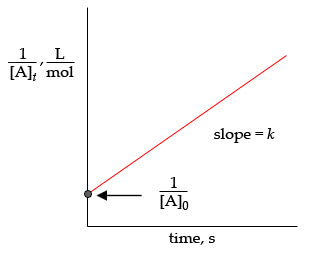1) The rate of reaction in terms of the "rate law expression" includes the rate constant (k), the concentration of the reactants, and the orders of the reaction with respect to the different reactants.
Consider the following reaction:
A+BâC+D
The initial concentrations of the reactants A and B are 0.380 M and 0.320 M, respectively.
The rate of reaction is 0.060 Mâ sâ1, and the orders of the reaction, with respect to reactants Aand B, are 1 and 2, respectively.
Determine the rate constant (k) for the reaction using the rate law.
Express your answer in Mâ2â sâ1 to three significant figures.
2)
consider the second-order reaction:
2HI(g)âH2(g)+I2(g)
Use the simulation to find the initial concentration [HI]0 and the rate constant k for the reaction. What will be the concentration of HI after t = 3.07Ã1010 s ([HI]t) for a reaction starting under the condition in the simulation?
Express your answer in moles per liters to three significant figures.
1) The rate of reaction in terms of the "rate law expression" includes the rate constant (k), the concentration of the reactants, and the orders of the reaction with respect to the different reactants.
Consider the following reaction:
A+BâC+D
The initial concentrations of the reactants A and B are 0.380 M and 0.320 M, respectively.
The rate of reaction is 0.060 Mâ sâ1, and the orders of the reaction, with respect to reactants Aand B, are 1 and 2, respectively.
Determine the rate constant (k) for the reaction using the rate law.
Express your answer in Mâ2â sâ1 to three significant figures.
2)
consider the second-order reaction:
2HI(g)âH2(g)+I2(g)
Use the simulation to find the initial concentration [HI]0 and the rate constant k for the reaction. What will be the concentration of HI after t = 3.07Ã1010 s ([HI]t) for a reaction starting under the condition in the simulation?
Express your answer in moles per liters to three significant figures.


